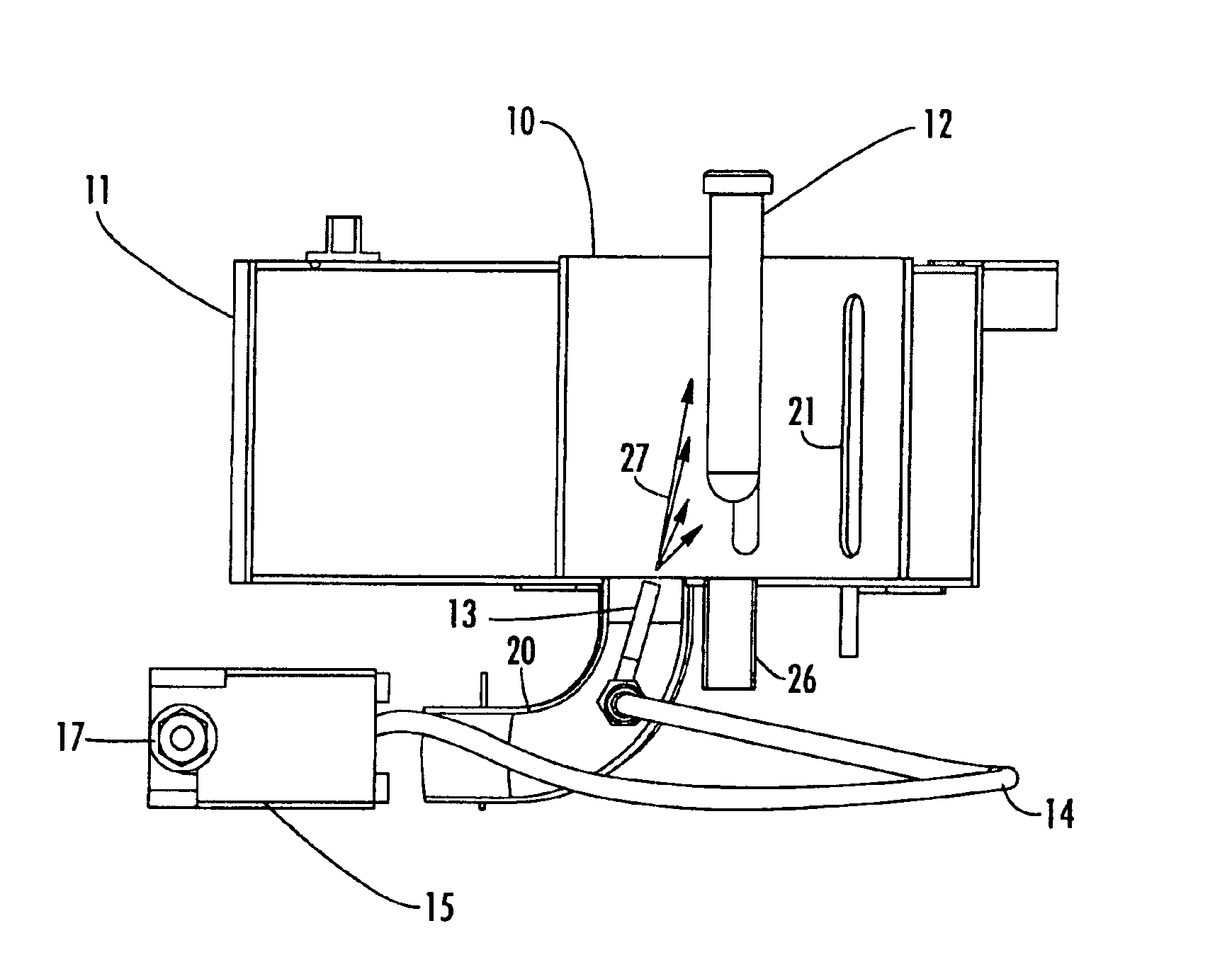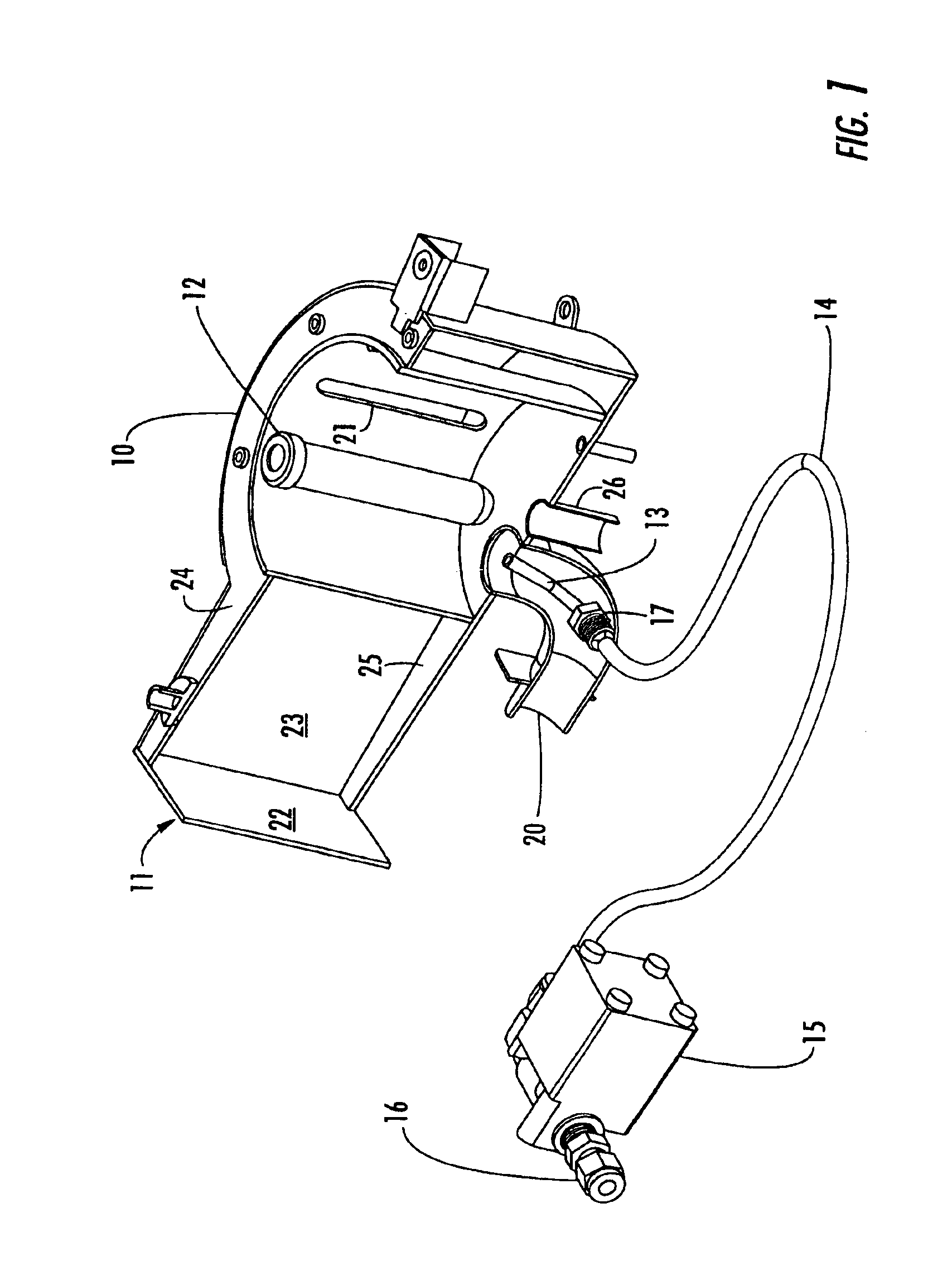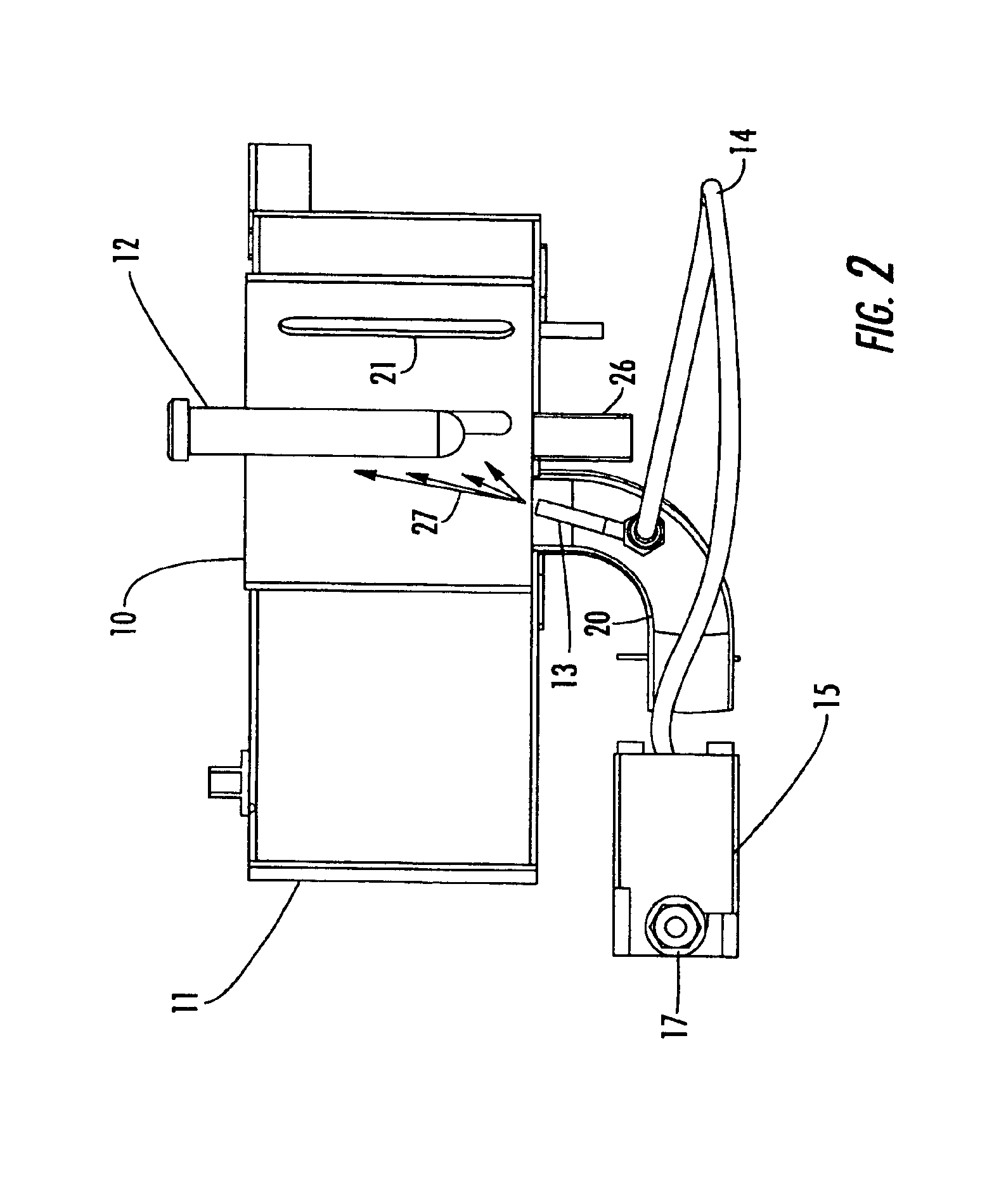Reaction and temperature control for high power microwave-assisted chemistry techniques
a chemistry technique and microwave technology, applied in the field of microwave-assisted chemistry techniques, can solve the problems of reducing the success rate of microwaves on small samples of materials, affecting the efficiency of reaction, and affecting the effect of reaction ra
- Summary
- Abstract
- Description
- Claims
- Application Information
AI Technical Summary
Benefits of technology
Problems solved by technology
Method used
Image
Examples
examples
[0077]Exemplary microwave reactions were carried out using a CEM DISCOVER™ System single-mode microwave instrument from CEM Corporation, Matthews, N.C. All reactions were performed in specially designed Pyrex pressure tubes equipped with a stir bar and were sealed with a Teflon / silicon septum. All gas chromatograms (GC) and mass spectra (MS) were obtained using a PerkinElmer AutoSystem XL GC / TurboMass MS system. 2-Chloropyridine, 1-methylphenylzinc iodide, furan, and diethylacetylene dicarboxylate were all purchased from Aldrich and were used as received. The organozinc iodide reagent came as a 0.5 M solution in THF in a Sure-Seal bottle. Pd(P(t-Bu)3)2 was purchased from Strem Chemicals and was used as received.
[0078]Negishi Reaction: Preparation of 2-o-Tolylpyridine. 2-Chloropyridine (100 mg, 0.88 mmol), Pd(P(t-Bu)3)2 (23 mg, 0.044 mmol), and 1-methylphenylzinc iodide (2.7 mL, 1.3 mmol) were mixed together in a reaction tube. The tube was sealed and the contents were irradiated for...
PUM
| Property | Measurement | Unit |
|---|---|---|
| wavelengths | aaaaa | aaaaa |
| wavelengths | aaaaa | aaaaa |
| frequency | aaaaa | aaaaa |
Abstract
Description
Claims
Application Information
 Login to View More
Login to View More - R&D
- Intellectual Property
- Life Sciences
- Materials
- Tech Scout
- Unparalleled Data Quality
- Higher Quality Content
- 60% Fewer Hallucinations
Browse by: Latest US Patents, China's latest patents, Technical Efficacy Thesaurus, Application Domain, Technology Topic, Popular Technical Reports.
© 2025 PatSnap. All rights reserved.Legal|Privacy policy|Modern Slavery Act Transparency Statement|Sitemap|About US| Contact US: help@patsnap.com



